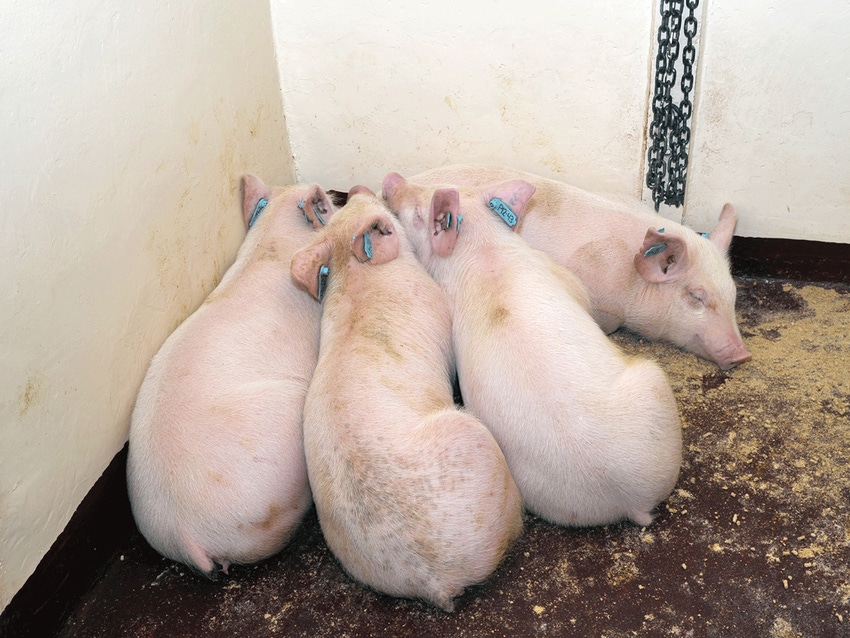Pork Board collaborates with Homeland Security against African swine fever
"This important work with the National Pork Board will enhance our resilience against the threat of ASF virus," says Larry Barrett, S&T PIADC Laboratory director.
November 13, 2019

The Department of Homeland Security Science and Technology Directorate and the National Pork Board entered into a collaborative agreement to assess potential methods to disinfect and decontaminate surfaces from African swine fever virus. As a proactive measure to address the spread of ASF virus occurring now in other parts of the world, scientists at S&T's Plum Island Animal Disease Center will evaluate commercial disinfectants and methods to decontaminate porous and non-porous surfaces typically associated with swine production facilities.
The research will be conducted through a funded cooperative research and development agreement between S&T PIADC and the NPB, a program funded by pork producers and sponsored by the USDA.
"This important work with the National Pork Board will enhance our resilience against the threat of ASF virus," says Larry Barrett, S&T PIADC Laboratory director.
The funded cooperative research and development agreement with the NPB allows the DHS to leverage an important cooperative partnership to execute its mission effectively. ASF is a high threat transboundary animal disease that is often fatal if contracted by pigs but poses no threat to human health. Domestic pigs, feral pigs, pork products and animal feed can spread the disease, and today ASF poses the greatest threat to America's swine industry, which is currently free of the disease. The United States is the largest pork exporter in the world, and domestically more than 115 million hogs valued at $24 billion go to market yearly.
"An outbreak of ASF — and a failure to plan for or manage its spread — would eliminate the domestic pork export market. There is currently no vaccine to protect swine in the event of an ASF outbreak. However, at PIADC we have established an interagency ASF Task Force with DHS S&T, USDA Agricultural Research Service and USDA Animal and Plant Health Inspection Service, to develop vaccines, improved diagnostic tests and disinfectant testing for this emerging disease threat," says John Neilan, S&T PIADC Science director.
ASF could be introduced into the United States from imported pork products and animal feed or by international travelers who illegally bring in contaminated pork products from infected countries. Over the past five years, the ASF virus has spread to more than 50 countries, including China, the global leader in pork production, resulting in a 25% drop in China's pork production and a 55% decrease in China's hogs in 2019, according to recent estimates.
"America's pig farmers continue to invest in seeking ways to keep ASF and other foreign animal diseases out of this country by partnering with groups such as those at Plum Island," says Dave Pyburn, senior vice president of science and technology at the NPB. "We're committed to doing what's needed to keep our nation's pig herd protected and our industry safe from this global threat."
The cooperative research and development agreement with the NPB is a byproduct of the ASF Task Force's work at S&T PIADC and efforts to coalesce expertise, resources and capabilities around mitigating the threat posed by accidental or intentional introduction of ASF domestically.
Click here for more information on the S&T Plum Island Animal Disease Center and its work or contact [email protected].
Source: Department of Homeland Security Science and Technology Public Affairs, which is solely responsible for the information provided, and wholly owns the information. Informa Business Media and all its subsidiaries are not responsible for any of the content contained in this information asset.
You May Also Like



